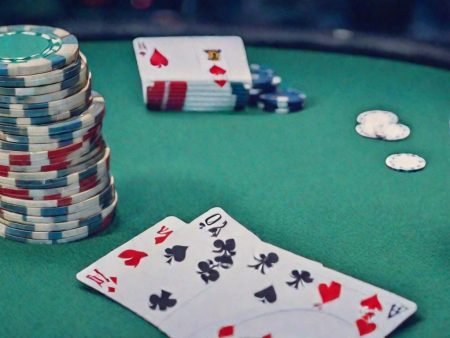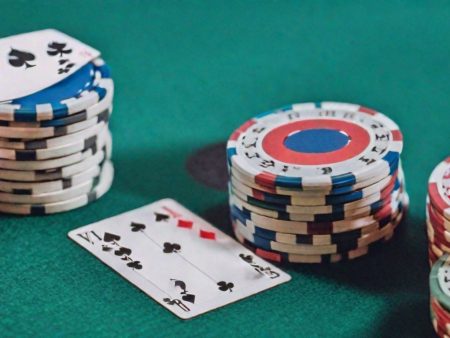Losing streaks, when a player faces a series of losses in poker, are known as downstreaks. This is the time when it feels like luck is not on your side, and everything you do seems to lead to negative results. However, these moments are an inevitable part of the game. It’s important to understand that every player experiences them, and knowing how to cope with such situations is key. Let’s dive into what causes downstreaks, what mistakes can make them worse, and how to recover with minimal losses.
Dangers Lurking for Poker Players
In the world of gambling, there are plenty of risks that can affect your financial situation and mental state. One of the most important factors is bankroll management — the money you set aside for playing. If a player isn’t careful and tries to recoup their losses too quickly, it can lead to serious financial problems.
Additionally, playing poker through a mobile app not only makes the game more engaging but also potentially more dangerous for your finances. Even if you are winning, the risk of losing is always there, which can lead to stress and financial pressure.
Psychology plays a major role in poker. Emotions can cloud your judgment and lead to poor decision-making. A downstreak is a natural result of not keeping your emotions in check. That’s why learning to stay calm and rational, especially during tough times, is crucial. Aggressive players can add extra risks by trying to confuse you, bluffing, and putting pressure on you to make decisions.
Read also: Dead money in poker: what it is and how to profit from it.
Fraud and Dishonest Players
In online poker, it’s important to stay vigilant because of the potential for fraud. Some players might use dishonest tactics, such as colluding or using cheats, making the game unfair. However, reputable online casinos take great care to prevent these incidents.
Another danger is gambling addiction. If a player loses control over the time spent playing or ignores their bankroll, it can lead to serious consequences both financially and personally. It’s also important to keep in mind that poker laws vary from country to country. Ignoring or being unaware of local regulations can lead to legal issues.
Stress and Its Impact on Your Game. When we’re stressed, our ability to make rational decisions is severely impaired. Continuing to play in such a state can lead to a losing streak — a downstreak. This is a natural process, and it’s essential to learn how to recover from it in order to minimize your losses.
How Long Does a Downstreak Last?
The length of a downstreak depends on many factors, and it can vary from player to player.
- Experience plays a key role. More experienced players can bounce back from tough situations faster, as they can analyze their mistakes and adjust their strategies accordingly.
- Different game formats can have varying lengths of downstreaks. For example, cash games may have longer and more intense streaks compared to tournament play.
- Good bankroll management allows players to weather long losing streaks without risking everything. Setting limits and maintaining control helps reduce financial losses and avoid stress.
- Analyzing mistakes, working on your emotional state, and staying calm will help shorten the duration of a downstreak.
Read also: Bluffing in poker from A to Z: a beginner’s guide.
How to Overcome a Downstreak?
Overcoming a downstreak can be a challenging task, but it’s definitely possible with the right approach. Here are some practical tips to help you regain control of your game.
- Honestly analyze your play. Start by reviewing your hands, decisions, and actions from the last few sessions. You might notice recurring mistakes that are contributing to your losses.
- Learn something new. Poker is a constantly evolving game. Strategies that worked in the past might no longer be relevant. Keep developing your skills and studying new approaches to stay ahead of the curve.
- Control your emotions. Mental resilience is what helps players make the right decisions even in stressful situations. Play based on logic, not emotion.
- Don’t play with money you can’t afford to lose. This is the fundamental rule for every poker player. Make sure your bet sizes align with your bankroll to minimize financial losses during a downstreak.
- Don’t be afraid to fold. Sometimes the right decision is to simply fold bad hands, even if you’re in a losing streak. This will preserve your chips for better opportunities.
- Take breaks when needed. If you feel like things aren’t going your way, take a break. Stepping away from the table will help you clear your mind and come back with a fresh perspective.
- Discuss your strategy with other players. Talking to fellow players can give you new insights and improve your game.
Remember, losing streaks are just a part of the poker experience. The key is not to get discouraged but to use these moments as an opportunity to grow and improve your skills. If you want to learn more about the gaming industry, check out our blog for useful tips and information. Also, if you’re looking for casinos with deposits as low as 1 USD, click the link. Are you into betting and casinos? Then you’ll enjoy the gambling guide – a breakdown of popular games, expert advice, and pro-player tricks.
FAQ: Duration of downstreak in poker
What is a downstreak in poker?
A downstreak refers to a prolonged period of losses or poor results in poker, often despite making correct decisions.
It’s a normal part of the game due to variance and luck in the short term.
How long can a downstreak last in poker?
The duration of a downstreak varies based on factors like the number of hands played, skill level, and game type.
It can last for days, weeks, or even months, especially in high-variance formats like tournaments.
What causes a downstreak in poker?
Downstreaks can result from bad beats, unfavorable variance, or mistakes in strategy.
Sometimes, psychological factors like tilt can exacerbate the problem, leading to more losses.
How can players identify if they are in a downstreak?
A clear sign of a downstreak is consistently losing over a significant sample of hands, even when playing well.
Tracking results and reviewing hand histories can help confirm if poor variance is to blame.
How should players deal with a downstreak?
To handle a downstreak, focus on maintaining a proper mindset, analyzing your game, and avoiding tilt.
It’s essential to manage your bankroll conservatively and consider taking breaks when needed.
Can a downstreak affect even professional players?
Yes, even experienced professionals face downstreaks due to the inherent variance in poker.
The key difference is that pros rely on disciplined strategies and mental resilience to overcome them.
What are the benefits of persevering through a downstreak?
Navigating a downstreak helps players build mental toughness and refine their game.
It also provides opportunities to identify leaks in strategy and improve long-term performance.






